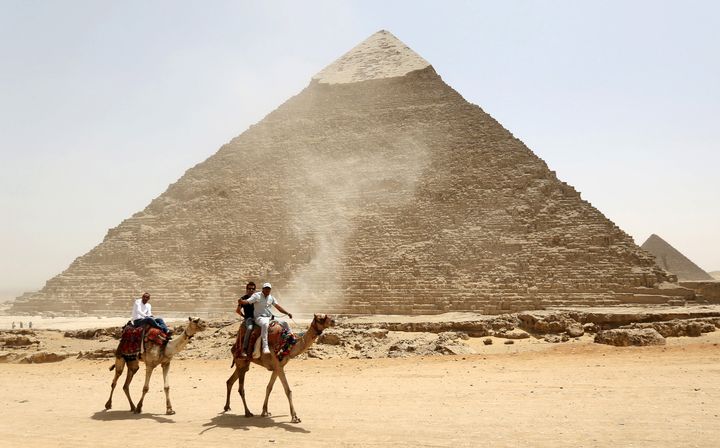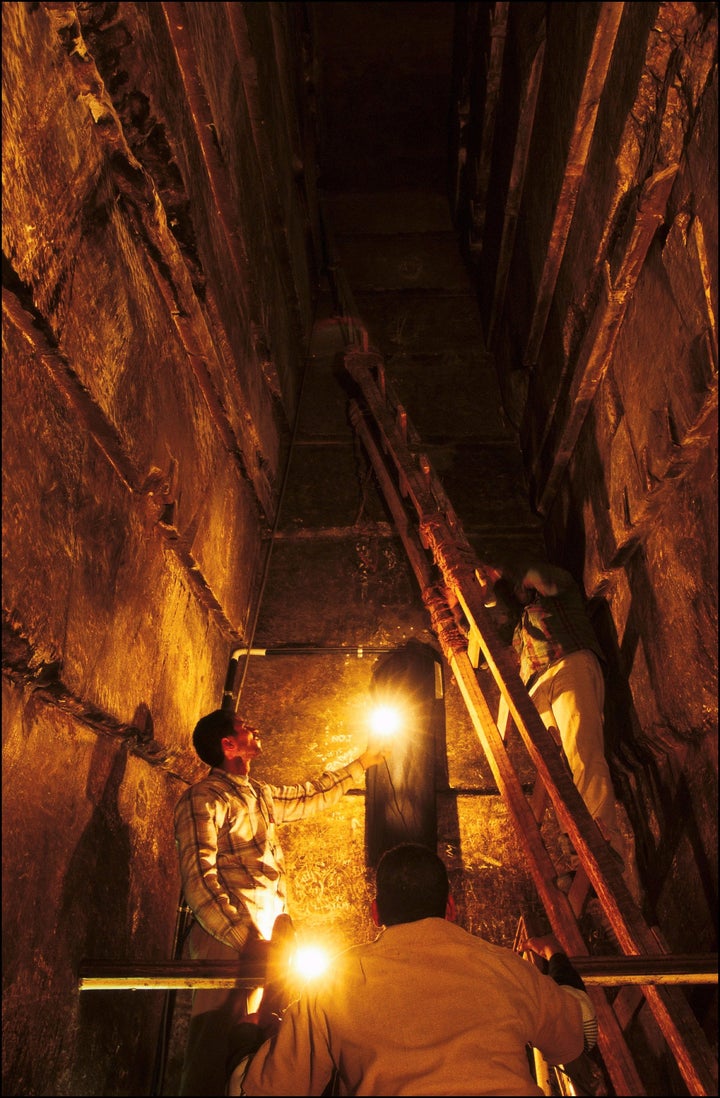A team of researchers studying Egypt’s Great Pyramid of Giza say they have detected a massive, previously unknown cavity inside the 4,500-year-old structure using non-invasive imaging.
The 100-foot-long void, which is roughly the length of an NBA court, was found by an international team of scientists who announced the results of their findings in the journal Nature on Thursday.
“We don’t know if it’s a chamber, a tunnel, a big gallery or things like that,” Mehdi Tayoubi, co-director of the Scan Pyramids project, which published the finding, told the New York Times. “We have chosen the word ‘void’ and nothing else because we don’t know what this void is.”

The Great Pyramid of Giza, also known as Khufu’s Pyramid for its builder, a 4th Dynasty pharaoh, is the largest of the Egyptian pyramids.
According to the article in Nature, the chamber is located above the pyramid’s Grand Gallery, which is a sloping passageway between the King’s Chamber and the smaller Queen’s Chamber. Though it’s not yet known what this chamber was used for, researchers suspect it is likely empty.
“There’s zero chance of hidden burial chambers,” Aidan Dodson, an Egyptologist at the United Kingdom’s University of Bristol, said in the Nature report.
Dodson reasons that they have already found the pyramid’s burial chamber, which holds a sarcophagus. He suspects that this large room is a “relieving chamber,” which is designed to reduce weight above the Grand Gallery.

According to Tayoubi, people have wondered for hundreds of years if there could be hidden chambers inside of the pyramid.
It was his own curiosity about the subject that prompted Scan Pyramids to position equipment inside the pyramid that is able to detect subatomic particles called muons, which are able to pass through the pyramid.
The muon detectors were placed inside the Queen’s Chamber and directed to record the muons’ locations and activity throughout the structure. Because the particles are partially absorbed by the stone, areas inside of the pyramid found with larger than normal collections of muons suggested a large space, the report states.

After several months of monitoring the detectors, “we had an unexpected line,” Tayoubi said in the report.
To back up the equipment’s findings, two other teams of physicists from France and Japan placed different types of muon detectors both inside and outside the pyramid. Those detectors reported the same void above the Grand Gallery.
“It was a big surprise,” says Tayoubi. “We’re really excited.”
Tayoubi said he hopes to next scan Khafre’s Pyramid, also known as Chephren’s, which is Egypt’s second largest pyramid.
Muon imaging had been performed on the pyramid in the late 1960s, the report notes, without any chambers being found. Tayoubi suggested that today’s more advanced technology may change that.